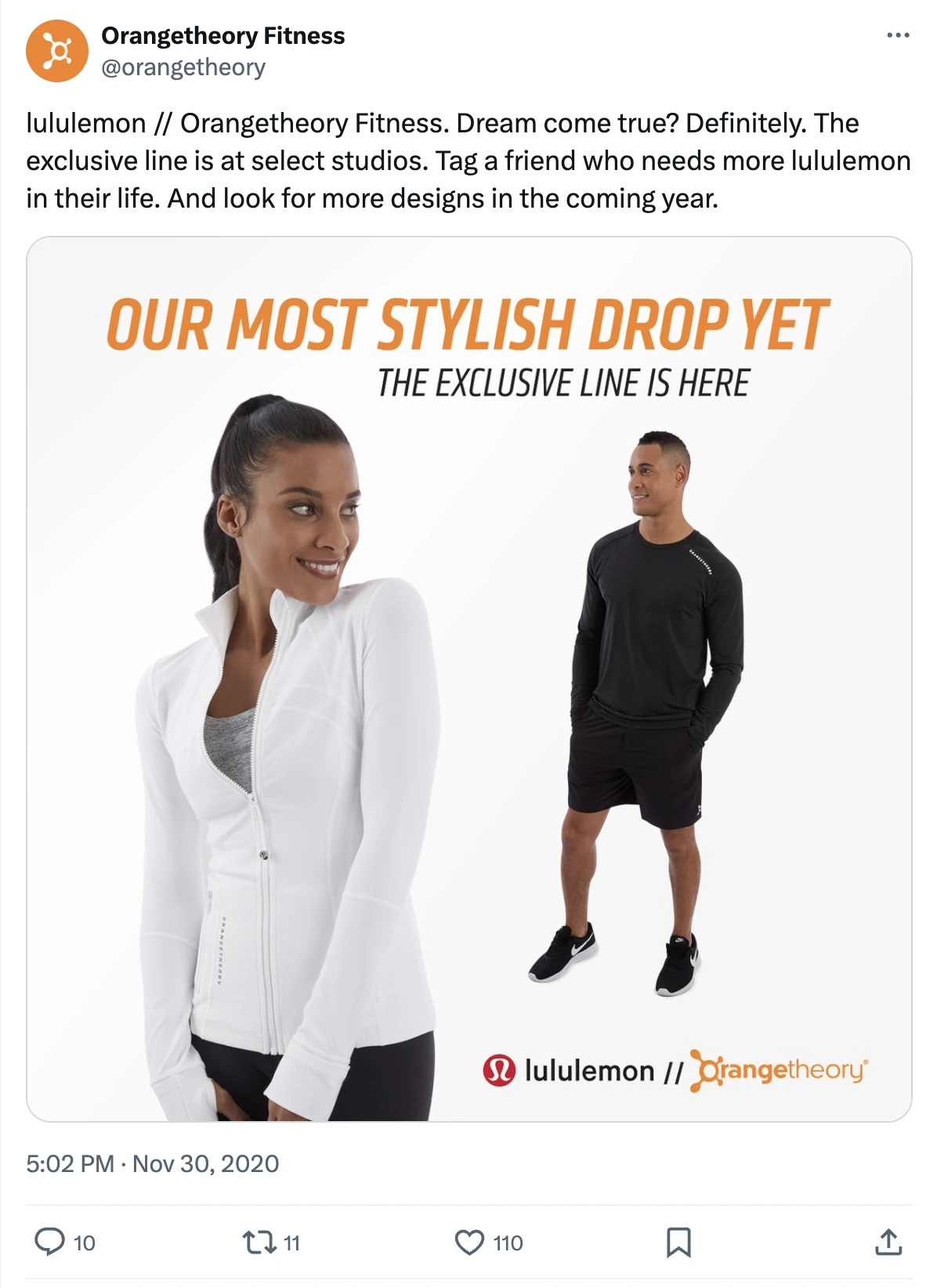Marketing Partners Explained: Your Guide To Partnership Marketing
Let’s say you’re facing a common challenge: expanding your audience base. Traditional marketing tactics can be effective, but they might not be enough to reach entirely new demographics or tap into a hidden potential customer base. So, what should you do instead? Simply put, shake hands. To make it clear – look for marketing partners!
A marketing partner is a business or an individual that you collaborate with to achieve shared marketing goals. These partnerships utilize the strengths and audiences of each marketing partner to generate win-win scenarios. But how can you find marketing partners, and what a partnership is supposed to be? Can referral marketing software be an important asset in the partnership agreement?
This guide will explore the various facets of partnership marketing, explaining why and how to use them, the different types available, and successful real-life examples to inspire your own campaigns. Keep on reading!
Table of Contents
Why Partner Up? The Power of Collaboration
So, why is it a good idea to create business relationships as a part of your marketing strategy? While solo performances can yield results, true breakthroughs often come from the harmonious collaboration of multiple instruments. And marketing partners embody the collaborative spirit. So, what are the results you can expect?
Reach New Audiences
Who doesn’t need more customers? Even if you are satisfied with your current lead generation process, you will need to establish a bigger flow of prospects if you want to keep your business growing.
By partnering with a company that complements your brand, you gain access to a new audience that you might never reach on your own. This approach can significantly expand your market reach and open doors to new customer segments.
🫴 Example: A boutique fitness studio could partner with a popular sportswear retailer. The sportswear retailer has a loyal customer base that is interested in fitness apparel and healthy living. Through co-branded promotions, workshops, or social media campaigns, the fitness studio can introduce its unique training programs to this relevant audience, expanding its reach beyond its existing clientele.
🌟 A good real-life case is the Orangetheory Fitness and Lululemon collab. A boutique fitness studio known for its high-intensity interval training classes (Orangetheory Fitness) partnered with a popular sportswear retailer known for its high-quality athletic apparel (Lululemon).

Strengthen Brand Credibility
Building trust and establishing credibility can be daunting tasks, especially for startups or lesser-known businesses. Even if you are not a total newbie, your brand may still be on the way to building trustworthiness and loyalty.
Marketing partners offer a shortcut to achieving this goal. Partnering with a reputable and well-respected name in your industry acts as a powerful endorsement. This association positively affects your products/services. Credibility that resonates with prospective customers comes entirely from your partner’s name.
🫴 Example: A young fintech business could partner with a well-established financial institution. What can they do? By co-hosting webinars on financial literacy or offering co-branded financial products, the fintech company uses the established trust of the financial institution. This way, it enhances its own credibility and attracts new customers who might be hesitant to embrace a new player in the market.
🌟 By issuing debit cards in collaboration with Visa, Chime gained instant credibility among relevant prospects who could otherwise be hesitant to trust their finances to a new app. Back in the day, Visa’s reputation as a secure and reliable payment network reassured users that Chime was a legitimate player.

Boost Brand Awareness
A well-executed partnership marketing campaign can significantly boost awareness for both partners. Using each other’s marketing channels and follower base can get more potential leads to notice you. As simple as that!
🫴 Example: A sustainable clothing store could partner with a popular eco-conscious blogger. The blogger has a dedicated following that is passionate about environmental causes (perfect prospects). Through product reviews, sponsored content, or social media campaigns, the clothing label can amplify its messaging and reach a wider segment of potential leads interested in sustainable fashion choices.
🌟 Aja Barber is a writer, stylist, and consultant who focuses on the intersections of sustainability. She has a following of 241,000 and collaborates with Ecosia, “a search engine that plants trees” (at least, that’s how they define themselves).

👉 One more thing to consider: For a successful collaboration, make sure your marketing goals are aligned with the goals of your marketing partners. Thus, you’ll ensure the partnership is mutually beneficial and drives success for both parties. And remember that you don’t have to choose just one brand for collaboration. You can manage several partnerships simultaneously.
Types of Marketing Partnerships: Building Bridges and Achieving Goals
So, what do you start with? There are many different types of marketing partnerships, each with its own unique advantages and challenges. Here’s a breakdown of some of the most common types:
| Partnership type | Benefits | Typical duration |
|---|---|---|
| Affiliate Marketing | – Increased brand awareness – Targeted customer acquisition – Performance-based commissions | Months to years (Long-term content marketing, seasonal promotions) |
| Influencer Marketing | – Increased awareness – Improved brand credibility – Access to a larger audience | Weeks to months (Shorter-term campaigns, product launches) |
| Joint Venture | – Shared resources and risks for a specific project – Access to new markets or technologies – Increased profits | Years (Strategic, long-term initiatives) |
| Referral Marketing | -Increased brand trust and credibility – Acquisition of high-quality leads – Lower customer acquisition cost | Months (Focused on customer acquisition and retention) |
| Co-Branding | – Merged brand identity for a product or service – Leverage of partner’s recognition – Appeal to a wider customer base | Months to years (Flexible depending on campaign goals) |
| Sponsorship Marketing | – Brand association with a positive event or cause – Increased awareness and visibility – Access to a target audience | Weeks to years (Varies based on event scale and brand goals) |
Referral Marketing
In this partnership, you get to tap into your partner’s customer base and vice versa. By recommending each other’s services, you both become like walking advertisements for one another. Leads are more likely to trust a business recommended by someone they already know.
Your marketing partner can promote your business to their audience, and you can manage to do the same for them. It’s a great way to spread the word without spending extra money on marketing. Those partnerships are more long-term oriented, so you may have to wait to get a full picture. Still, usually, when it comes to referral marketing, you see the first results very early on.
A great marketing partner could be a referral marketing company itself. You can work with companies that know how to increase traffic and how to deliver great results with the right software. Referral partnerships with Referral Factory, a company handling referral marketing for years, can be a great way to boost your business’s revenue and customer base.
👉 Things to consider: The approach requires understanding your lead well enough to incentivize referrals. Offer attractive rewards for both the person referring (the one who refers you) and a new customer. And don’t forget to track referrals to measure your success.
🎯 Good for: All types of businesses that have at least a couple of loyal customers.
🌟 Example: The most known search engine giant has a referral marketing program that rewards business customers for signing up new users for Google Workspace. After joining the referral program, customers receive a personalized link to share with their network. For each new Google Workspace account activated using that link, the person referring earns $15 if the new user becomes a paying customer for 90 days or more.

Affiliate Marketing
Affiliate marketing is an essential revenue-sharing partnership where you partner with another website or influencer to promote your brand’s products or services. Your affiliates earn money (a commission) for every sale or lead generated through their efforts.
👉 Things to consider: Choose marketing partners with a relevant audience and good reputation. Set clear commissions and track results closely. Ensure quality control of marketing partner promotions to maintain brand image.
🎯 Good for: Affiliates work particularly well for e-commerce businesses looking to expand their reach and sales.
🌟 Example: Shopify is running a powerful affiliate program on its platform, and its popularity is staggering. They partner with a variety of content creators, course educators, influencers, and review sites to promote their platform.

Content Marketing Partnership
When it comes to content marketing partnerships, you collaborate with another business to create valuable content, such as blog posts, videos, infographics, or webinars. This content is then shared on both partners’ channels, allowing them to reach a wider audience and establish thought leadership.
👉 Things to consider: Align content themes and target audiences with your partner. Ensure clear division of labor and editorial control. Promote co-created content effectively across both channels.
🎯 Good for: Businesses of all sizes who want to grow their online presence.
🌟 Example: VICE and Vans teamed up for a content marketing partnership to create “Boardly,” a series of videos celebrating women in skateboarding. The series highlights the contributions and stories of women involved in the skateboarding world, from photographers to skaters, each video showcasing their talents and promoting inclusivity in the sport. You can check dozens of interesting stories and see why this project is one of the stand-out ideas for your inspiration.

Influencer Marketing
Influencer marketing is a very powerful and efficient approach that involves collaborating with social media influencers or bloggers to promote your products/services to their audience. Influencers are an essential tool for reaching new audiences, creating awareness, and boosting lead generation. They can provide guidance on how to use your product, host events, share their opinions, etc.
👉 Things to consider: Choose influencers with a genuine fit for your mission and values. If you are short of budget, focus on micro- and nano-influencers with engaged communities for better results. Be transparent about sponsored content and avoid misleading promotions.
🎯 Good for: Businesses of all sizes, especially those targeting younger demographics.
🌟 Example: Daniel Wellington is a great real-life proof of how businesses can boost their sales and ROI through influencer-generated content. Daniel Wellington extensively used micro- and nano-influencers for its partnership marketing campaigns. As a result, there was a significant increase in the number of posts using the branded hashtag on social media, which greatly enhanced their visibility and awareness.

Joint Marketing
Joint marketing, also known as co-marketing, is another way to amplify your business by combining your marketing efforts with other firms. Usually, companies involved pool their resources and expertise to create and execute marketing campaigns. Resources can include things like:
- Budget for advertising or content creation;
- Email lists for reaching potential customers;
- Social media followings for broader reach;
- Expertise in specific marketing areas.
👉 Things to consider: Choose a marketing partner with complementary products or services. Clearly define campaign goals, target audience, and responsibilities. Keep clear communication and messaging throughout the campaign.
🎯 Good for: Businesses of all sizes looking to expand their reach and resources.
👉 Example: Netflix partnered with Japanese content studio BABEL LABEL in a multi-picture deal to promote live-action films and series through strong local collaborations.

Loyalty Marketing
To put it simply, loyalty marketing means that you collaborate with other businesses, using your loyalty programs in order to offer more value for your customers and leads. Businesses with established loyalty programs partner up to give members more exclusive offers from both programs. This can involve:
- Earning points or rewards in one program for activities related to the other partner’s brand;
- Redeeming points or rewards for products or services from the marketing partner company;
- Offering exclusive discounts or offers that are available only to the members of both programs.
👉 Things to consider: Design an offer with clear rewards. Personalize each reward based on customer behavior. Track your campaign performance and make adjustments as needed.
🎯 Good for: All types of businesses, especially those with repeat purchase potential.
🌟 Example: Starbucks has long been a leader in customer loyalty programs, while Delta is also well-known for its extensive SkyMiles rewards initiative. In October 2022, they teamed up to start delivering one of the best loyalty program partnerships, enhancing the value of both programs. By linking a Delta SkyMiles account with a Starbucks Rewards account, users can earn 1 mile for every $1 spent at Starbucks. Additionally, on days when flying with Delta, U.S. customers can earn double stars at Starbucks.
This collaboration has been a great success, surpassing the expectations of both brands. Given Starbucks’ presence in nearly every major U.S. airport, the partnership with Delta Airlines is a natural fit. The campaign is open to both new and existing customers, offering additional perks and convenience for loyal clients of both brands.

Sponsorship Marketing
Sponsorship marketing is a deal where companies help support an event, organization, or project with money or resources. In return, businesses get to promote their brands, link their name with the cause of that event or organization, boost their revenue metrics, and reach their target audience. As a result, they receive the ability to increase sales and improve their overall image (depending on the events and organizations they support, of course).
👉 Things to consider: Choose sponsorships that align with your brand’s values and target audience. Negotiate sponsorship packages that provide measurable advantages. Track the impact of sponsorships and measure ROI.
🎯 Good for: Businesses of all sizes, particularly those looking to build awareness or target a specific audience segment.
🌟 Example: Here is a cool idea for your inspiration – the collaboration of Coca-Cola and the Olympic Games. What’s special about it? The positioning. When explaining why Coca-Cola supports the Olympics, they say, “We like to support things our consumers care about.”

Co-Branding
Co-branding is all about combining the brands’ strengths and customer bases. This way, companies aim to achieve higher visibility and a wider market reach while boosting customer appeal and loyalty through each other’s reputation. It adds even more interest to both brands. It adds even more interest to both brands. This type of collaboration can also extend to wholesale partnerships where you get wholesale prices and become a reseller of each other’s products.
👉 Things to consider: Choose partners with a strong reputation and a complementary product or service. Clearly define co-branding marketing strategy, product development, and marketing efforts. Ensure quality control of the co-branded product.
🎯 Good for: Businesses of all sizes looking to expand product offerings or enter new markets.
🌟 Example: Nike and Apple joined hands to create the Apple Watch Nike+ with the goal of attracting customers from both brands’ devoted fan bases. This collaboration was a strategic move aimed at tapping into the shared customer loyalty of Nike and Apple.

How to Establish a Partnership That Works in 5 Steps
Now that you know the types of marketing partners, the only question is to figure out how to create partnerships that actually work. Let’s find out what you need to do step-by-step.
Step 1: Find a Marketing Partner
Think of partnerships like friendships. You wouldn’t team up with just anyone, would you? The same goes for business. Look for a marketing partner whose strengths complement your weaknesses. Maybe you’re a whiz at product development but struggle with marketing. Your marketing partner, on the other hand, might have a stellar social media presence. In other words, you can amplify each other by combining strong sides.
Step 2: Offer a Benefit for Your Partner
What’s in it for them? It’s a simple question but a crucial one. Your marketing partners need to benefit from the collaboration just as much as you do. This could be increased sales, a new lead generation stream, access to a new audience, or simply a chance to work on a cool, innovative project. When you create an offer for a potential partner, clearly show its benefits.
Step 3: Develop a Collaborative Strategy
Having a clear plan is like having a roadmap for the journey with your marketing partner. Discuss your goals, target audience, and how you’ll achieve them together. Who will handle what tasks? How will you communicate and make decisions? Ironing out these details upfront will save you headaches down the line. Note that there are rather low-key partnerships. You establish a connection, but you act later. For those, also make sure to develop a course of action.
Step 4: Track and Optimize
Just like any project, it’s important to track your progress. Are you reaching your goals? Is the partnership generating the results you expected? Regularly analyze your performance and adapt your marketing partner strategy as needed.
Step 5: Protect Your Plan
Getting into legislation might not be necessary with every marketing partner, especially casual collaborations. However, if you’re dealing with sensitive ideas, consider having an agreement outlining ownership and confidentiality.
Conclusion
Building strong partnerships takes effort but can be incredibly rewarding. You can increase sales by simply contacting a complementary business marketing partner and setting up a paid partnership. Make sure to choose the right marketing partner and offer equal advantages for both parties.




